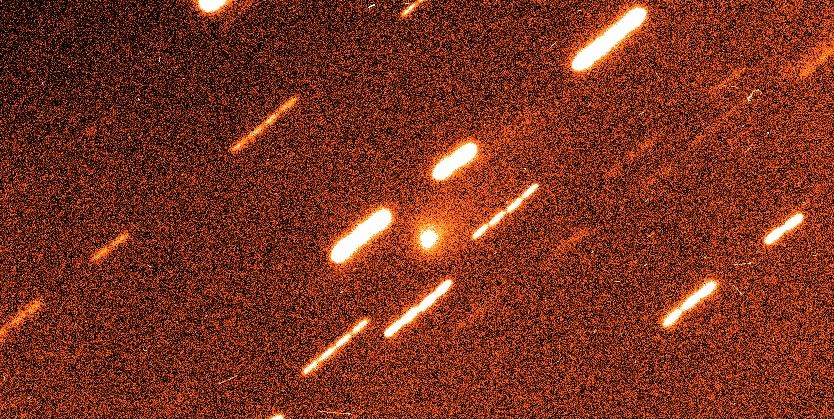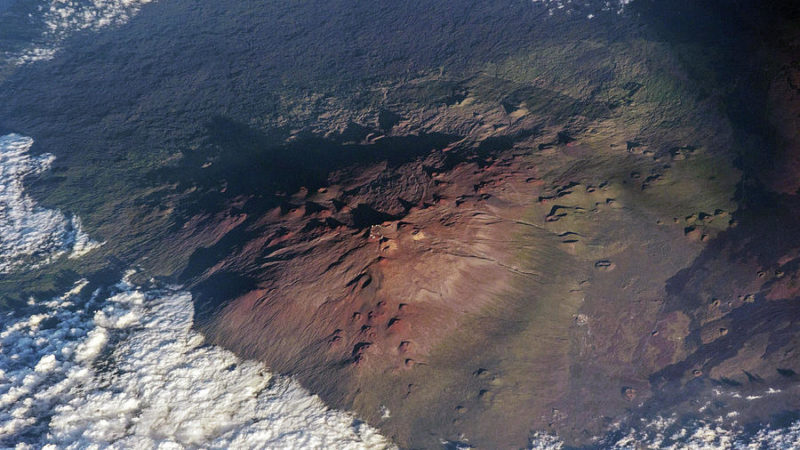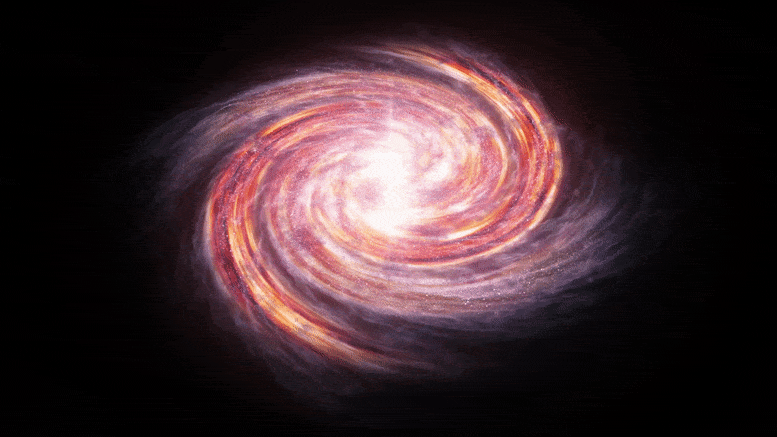An Exclusive Image of the Interstellar Comet That Stunned Astronomers – Popular Mechanics
- Astronomers are celebrating that was discovered zipping through our solar system last month.
- A new image of comet C/2019 Q4, taken by the Nordic Optical Telescope and shared with Popular Mechanics, provides a new perspective on the interstellar visitor.
- In the next few months, C/2019 Q4 could reveal insight into the formation of distant star systems and, possibly, the universe.
A new interstellar object was discovered late last month by astronomer Gennady Borisov of the Crimean Astrophysical Observatory. He came across the comet—just a small, fuzzy blip on the screen of his computer—on the morning of August 30, and posted the discovery to an on September 1.
Professional and amateur astronomers were captivated.
There are currently 3,588 known comets orbiting our sun, according to NASA, with many more circling stars in distant galaxies and others still that are sliding between galaxies. In 2017, one such comet, named ‘Oumuamua,’ or U1, quickly zipped through our solar system. Scientists had just a few weeks to study the interstellar interloper before it darted out of view.
Luckily, this new comet, called C/2019 Q4, could stick around for up to a year. (It’s expected to swing closest to Earth in early December. ) Unlike most of the other objects in our solar system, which fly around in an elliptical orbit that closes in on itself, the newly discovered comet follows a long, sweeping hyperbolic trajectory.
Celestial objects with a perfectly circular orbit have an eccentricity—the measurement of an orbit’s shape—of 0. Objects in our solar system with an elliptical orbit around the sun have an eccentricity between 0 and 1. Comets that originate in the Oort cloud have an eccentricity very close to 1. They’re still bound to the sun, but they have a parabolic orbit. Oumuamua had a squashed parabolic orbit; its eccentricity was 1.2. As for C/2019 Q4’s eccentricity?
“It’s actually kind of an intriguing number,” astronomer Michele Bannister of Queen’s University Belfast in Northern Ireland tells Popular Mechanics.
Thanks to a phenomenon called gravitational focusing, light concentrated by the sun’s gravitational field can bring certain swaths of interstellar space into sharper focus.
“The focus effect of the sun means that we can detect interstellar objects preferentially that have a particular eccentricity,” Bannister says. Latest observations show that C/2019 Q4 falls right within that window. Due to its hyperbolic trajectory, its eccentricity hovers around 3.5, give or take 0.2.
Preliminary measurements have already been taken by observatories like the Gemini North Telescope in Hawaii and the Nordic Optical Telescope in the Canary Islands; these observations will be joined by others as the angle between the sun and C/2019 Q4 grows.
Currently, C/2019 Q4 appears too close to the sun for telescopes like the Hubble Space Telescope to get a good look at it. But that will change in October.
Astronomer David Jewitt of the University of California Los Angeles is already making moves to observe the comet. Jewitt, who, along with astronomer Jane Luu discovered the Kuiper Belt in 1992, has imaged the object using the Alhambra Faint Object Spectrograph and Camera on the Nordic Optical Telescope. Next, he and his team are in the process of reserving time on or around October 15 to point Hubble’s instruments toward the object as it slips out of the sun’s glare.
Bannister says there are several important insights that this new interstellar invader may provide us. Comets are large balls of gas, ice, and dust—remnants from the formation of their respective solar systems.
“This is a building block of a planet that formed around another star,” Bannister says. Understanding its composition will be key and can help scientists understand the elemental makeup of different star systems.
Telescopes like Hubble have the ability to take a spectroscopic image of the comet, which measures the chemical signature of molecules in its tail.
“People have done that for a hundred years or so,” Jewitt tells Popular Mechanics. “We measure their composition, and that’s how we know that comets are dominated by water ice, carbon monoxide, carbon dioxide and whole bunch of other weird things.” Still, there’s more to discover.
“My inbox is currently full of emails as we are all figuring this out,” Bannister says.
As C/2019 Q4 passes near the sun, the water ice on its surface could heat up and escape. Low temperatures have likely kept the comet together.
“It’s been in the interstellar medium, where, basically, everything is very cold,” Jewitt says. “Now, it’s in a completely different environment from any environment that it’s experienced, and that could have extreme physical effects on the nucleus.” If the comet’s nucleus is too small, it could disappear from view.
“This might be the very first time in its entire many millions of years lifespan that it’s ever been heated before,” says Bannister. “We don’t know what it’s going to do.”
Telescopes may catch C/2019 Q4 brighten as it sweeps closer to our sun—as comets from our solar system are known to do. “That might be one of the things we’ll keep a look out for,” she says. “We don’t know.”
Planetary geochemist Mikhail Zolotov of Arizona State University would like to take observations of C/2019 Q4 a step further and eventually send a spacecraft to analyze interstellar dust left in its wake.
“It would be very interesting to catch the comet’s material not by spectroscopic methods but in situ,” Zolotov tells Popular Mechanics.
Zolotov argues a new mission similar to NASA’s Stardust, which attempted to collect interstellar dust and flew by asteroid AnneFrank and comet Wild-2 in the early 2000s, would serve to return valuable information about other parts of the universe. “In this case, we know where to go, and I think we have the potential to collect the dust,” he says.
Zolotov says this information could help pinpoint what type of star the comet formed near, the age of that star, and maybe even which star system it came from. Because telescopes measure the gas composition of nearby stars, “it might be enough to say, ‘Oh, ok, the comet came from this nearby star,’” he says.
Shortly after observing U1 in 2017, Jewitt predicted that there may be over 10,000 interstellar comets within the orbit of Neptune. “The most excellent thing about these objects is the number of them,” says Jewitt. They take roughly 10 years to slide from one end of Neptune’s orbit to the other.
Based on Jewitt’s calculations, three interstellar comets enter the planetary region of our solar system every day. Due to the vastness of space and our own deficiencies in observing that vastness, we often miss them.
At the time, Jewitt also predicted that it would be maybe two years before we came across another interstellar comet. As this latest visitor has shown, his estimate was right on target.
“We’ll detect more of them as time goes on,” he says. “It’s already good that we got the second [comet] pretty much on schedule.”








